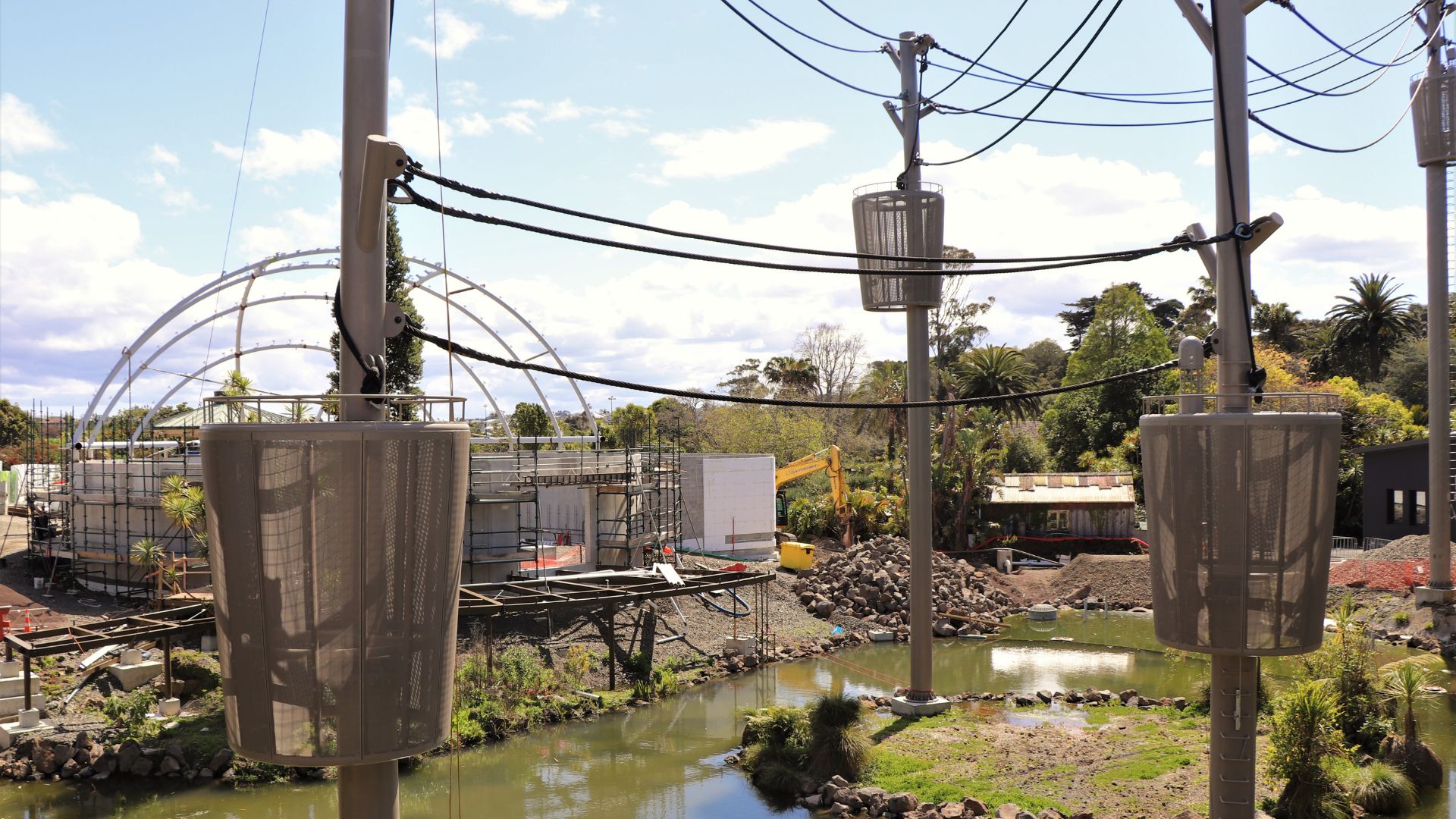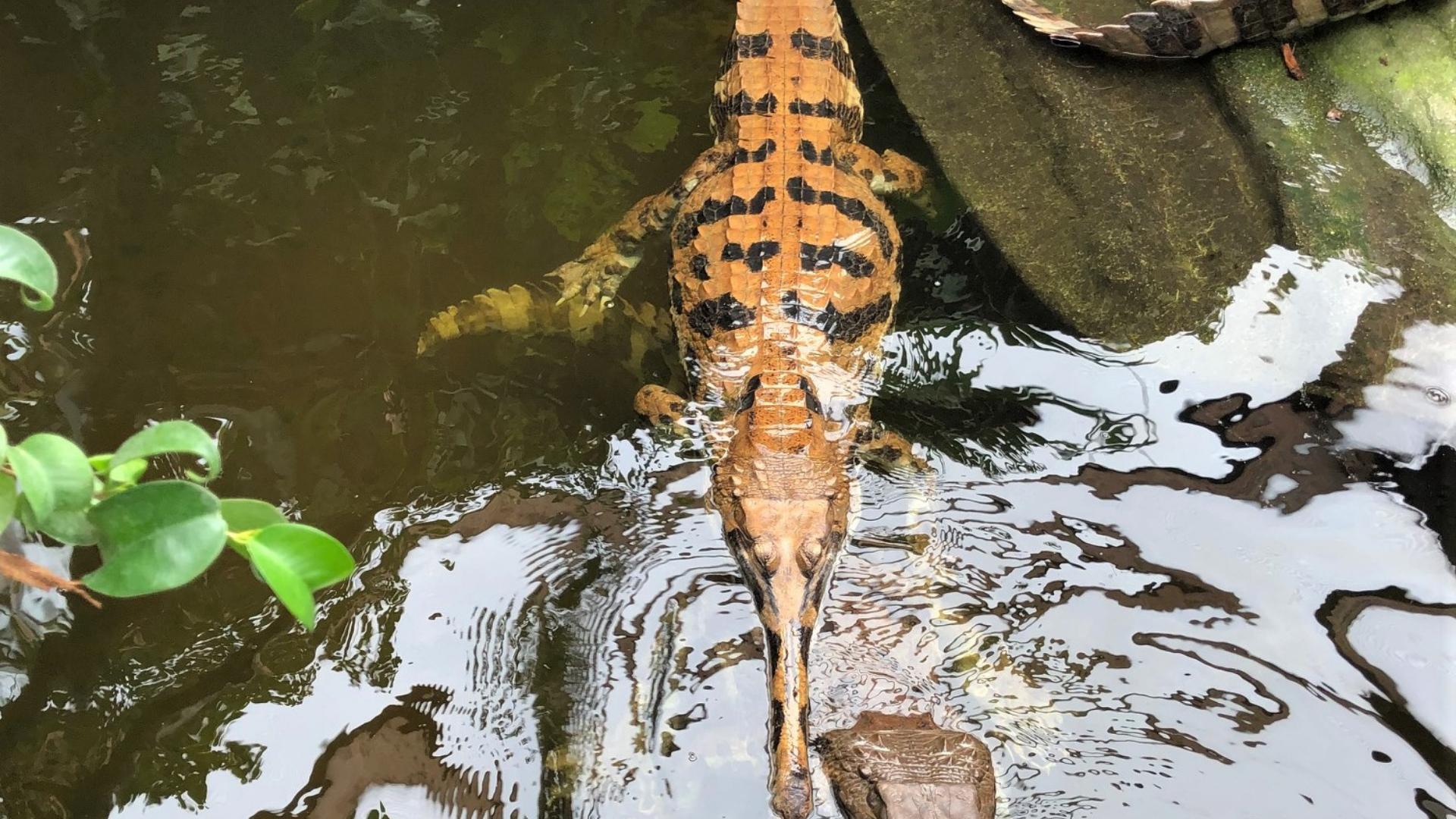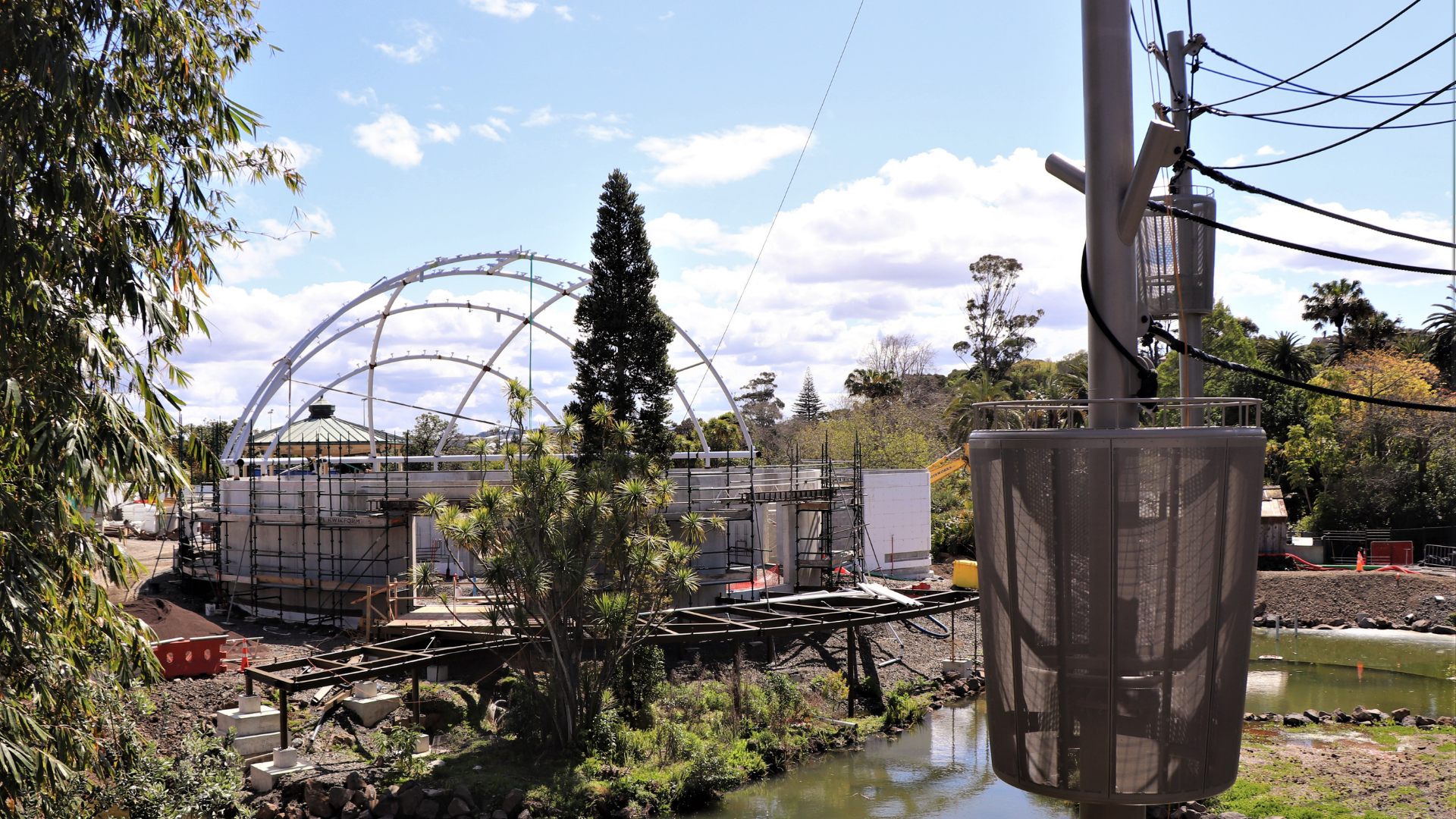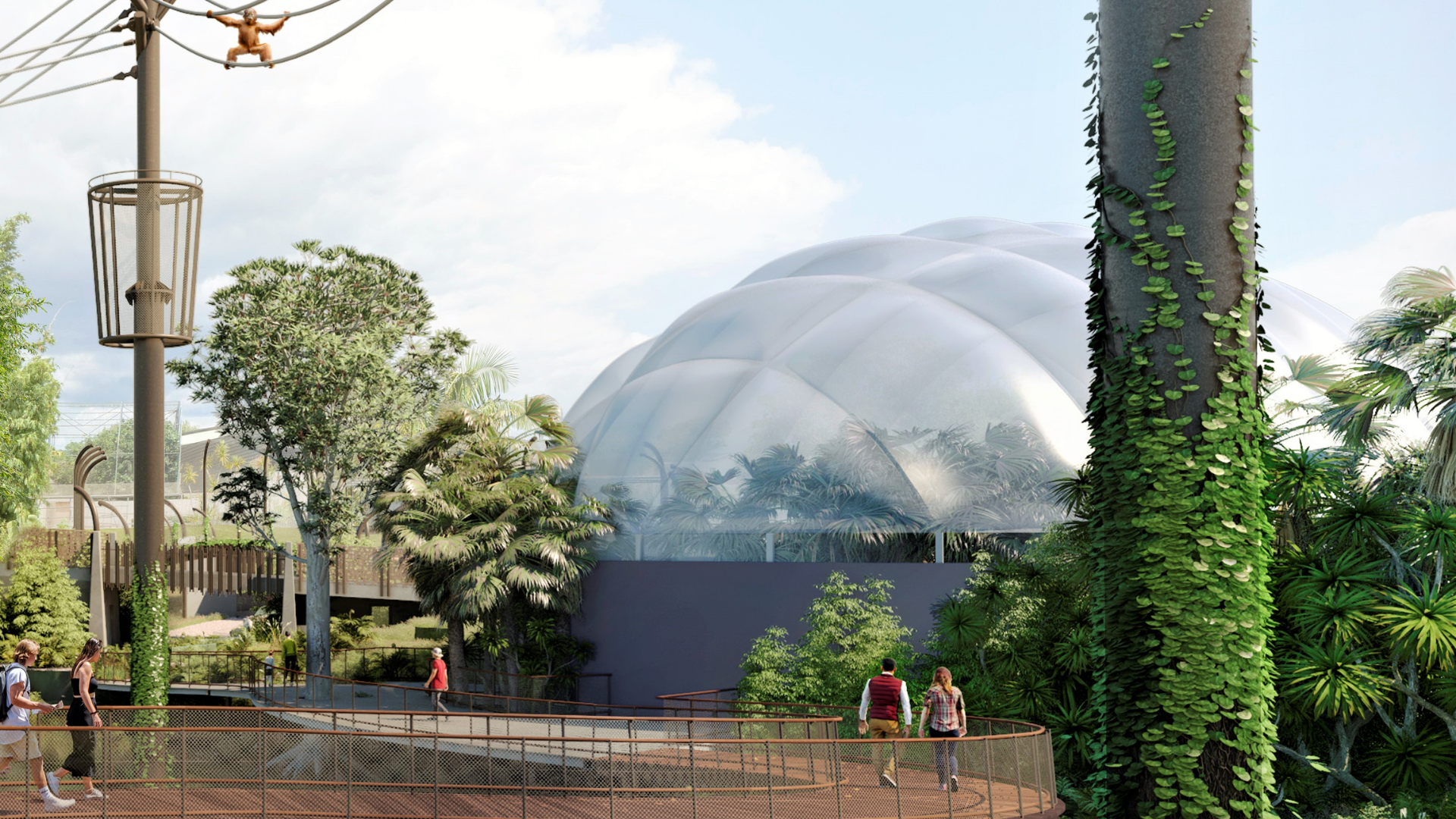Like our lowlands habitat for Sumatran tigers and Asian small-clawed otters, the impacts of Covid-19 mean the swamp forest habitat is going to take longer to complete than originally anticipated and will now open in summer 2021-22. But as our Head of Life Sciences and reptile specialist Richard Gibson says, “it will definitely be worth the wait!”
“This will be a world-class habitat – and a first of its kind for New Zealand - which will totally transport visitors to a slice of Sumatra’s palm-rich swamp forest. There’ll be eye-to-eye viewing of the extraordinary Sunda gharial crocodiles, shimmering shoals of fish including the extraordinary Asian arowana or dragonfish, and eventually turtles and tortoises all living in together in the authentic tropical environment. To create the right climate, we’re maximising use of natural sunlight through the hi-tech ETFE roof, extending day length in the winter with carefully selected LED floodlighting and have designed complex heating, ventilation and rain and misting systems. Combined with lush plantings, deep warm pools and beach areas, it’ll be a habitat where these species can thrive, and one in which our visitors will feel fully immersed.
“Indonesia is an incredible part of the world, but its wildlife and wild places are being devastated by habitat loss and animal poaching. Auckland Zoo has long supported critical conservation programmes in Sumatra that are helping to conserve a great diversity of species and ecosystems, and with your support we can continue to do so. Like the rest of the zoo, the South East Asia Jungle Track is about giving our visitors a meaningful glimpse of the wonderful world of wildlife and in doing so, growing a love for wildlife and taking action to save it. We can’t wait for everyone to come and see, sense and feel the swamp forest in all its tropical glory” says Richard.





